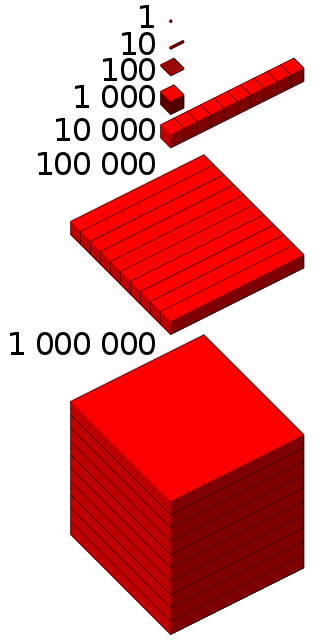Related Research Articles
In number theory, a lucky number is a natural number in a set which is generated by a certain "sieve". This sieve is similar to the Sieve of Eratosthenes that generates the primes, but it eliminates numbers based on their position in the remaining set, instead of their value.
79 (seventy-nine) is the natural number following 78 and preceding 80.
73 (seventy-three) is the natural number following 72 and preceding 74. In English, it is the smallest natural number with twelve letters in its spelled out name.
31 (thirty-one) is the natural number following 30 and preceding 32. It is a prime number.
37 (thirty-seven) is the natural number following 36 and preceding 38.
39 (thirty-nine) is the natural number following 38 and preceding 40.
67 (sixty-seven) is the natural number following 66 and preceding 68. It is an odd number.
1000 or one thousand is the natural number following 999 and preceding 1001. In most English-speaking countries, it can be written with or without a comma or sometimes a period separating the thousands digit: 1,000.
500 is the natural number following 499 and preceding 501.
700 is the natural number following 699 and preceding 701.
600 is the natural number following 599 and preceding 601.
800 is the natural number following 799 and preceding 801.
900 is the natural number following 899 and preceding 901. It is the square of 30 and the sum of Euler's totient function for the first 54 positive integers. In base 10 it is a Harshad number. It is also the first number to be the square of a sphenic number.
163 is the natural number following 162 and preceding 164.
151 is a natural number. It follows 150 and precedes 152.

One million (1,000,000), or one thousand thousand, is the natural number following 999,999 and preceding 1,000,001. The word is derived from the early Italian millione, from mille, "thousand", plus the augmentative suffix -one.
777 is the natural number following 776 and preceding 778. The number 777 is significant in numerous religious and political contexts.
277 is the natural number following 276 and preceding 278.
Euler's "lucky" numbers are positive integers n such that for all integers k with 1 ≤ k < n, the polynomial k2 − k + n produces a prime number.
41 (forty-one) is the natural number following 40 and preceding 42.